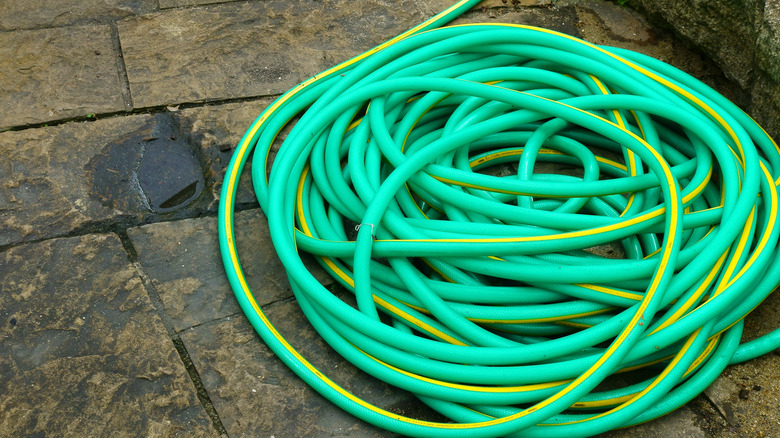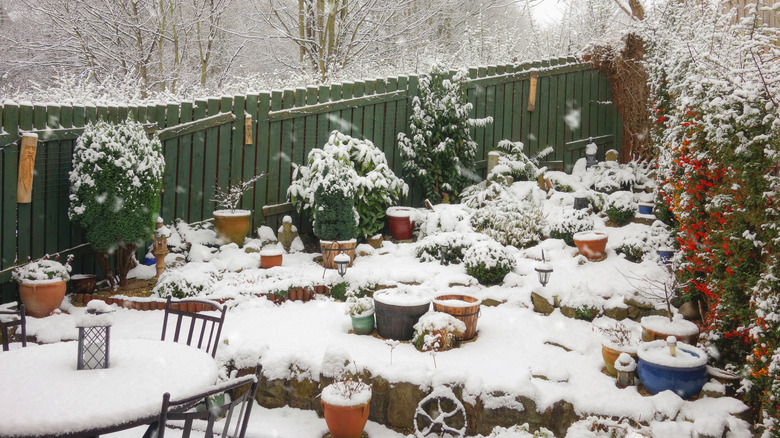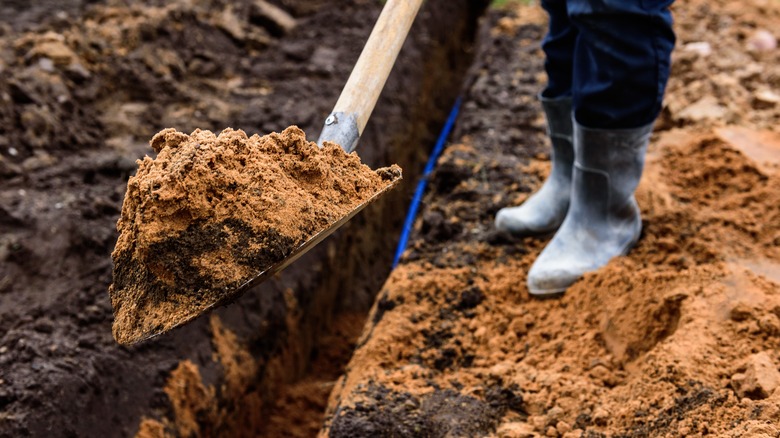This Sneaky Yard Hack Prevents Garden Hoses From Ruining Your Curb Appeal
Garden hoses — no matter how they're wound or partially housed — are incredibly difficult to effectively blend into the aesthetic of your home's exterior and/or landscaping. Hoses tend to be large, bulky, and brightly colored, making them feel like a necessary evil to contend with when performing yard work, gardening, or just viewing your home from the outside. What if there was a way to fully hide your hose, preventing it from acting as an eyesore or a tripping hazard? There is: burying it.
Believe it or not, burying your garden hose underground can be a perfectly safe alternative to struggling with winding it up and storing it in the least obvious spot you can conceive of. However, quite a few caveats will determine whether doing so is a good idea in your particular area and living situation. Consider this your guide to burying your garden hose to increase your home's curb appeal — starting with determining whether or not your home is a good candidate for the hack.
Factors to consider before burying your garden hose
While burying your garden hose can be a safe and effective solution to your outdoor décor woes, this isn't the case for everyone in every climate. If you happen to reside in a region where temperatures drop very low at times, burying your hose isn't likely the hack for you. As the ground freezes in winter, your hose will freeze with it, causing it to become brittle and crack before the spring thaw arrives.
Those who live in areas that experience extreme heat should consider burying their hose with caution. An underground hose in a very hot climate will break down faster than one above ground. Your property's soil type matters as well. Light, sandy soils are best for digging the trench required to properly bury a garden hose. Side note: there are plants that thrive in sandy soil! Hard, rocky soil types will pose a significant challenge and may require a power trenching tool. Otherwise, a trenching shovel should suffice.
Lastly, consider the fact that underground pests — like moles, gophers, chipmunks, and voles — will be able to smell the water in your underground hose and may be drawn into your lawn by it (and potentially chew through it for a drink). If the risk of finding rodents in your soil isn't worth the curb appeal, you may wish to reach for a plan B. Perhaps purchasing a hose-hiding bucket on Amazon is more to your liking.
How to safely and effectively bury your garden hose
If you've determined that your property is a good candidate for burying your garden hose, the first step is to make sure you have an appropriate hose for the job. Since soil weight can be considerable, a buried hose needs to be firm in order to prevent collapse. Either a standard rubber hose or a soaker style hose is best for burying. First, you'll need to dig a trench where you hose will be buried. Keep in mind that the hose should end up no deeper than 12 inches and no shallower than 6 inches.
To minimize the chances of unseen leaks, use one long hose rather can connecting multiple shorts ones. Once the hose has been placed in the trench, test the water pressure. If it seems low, check for kinks and adjust the hose, if necessary. Only fill in the trench and bury the hose when you are satisfied with its performance. Once buried, consider covering the buried hose with mulch or decorative tiles to help protect it from soil compaction.


